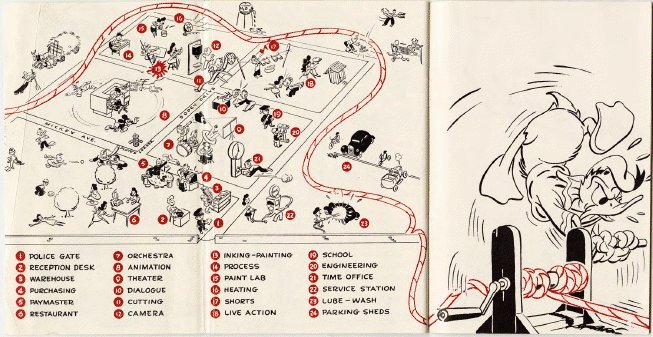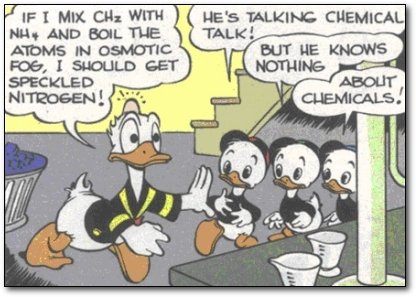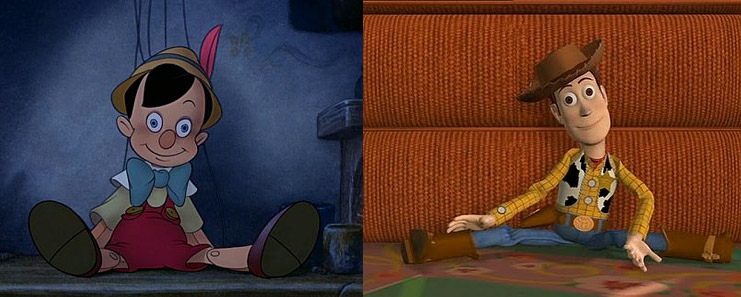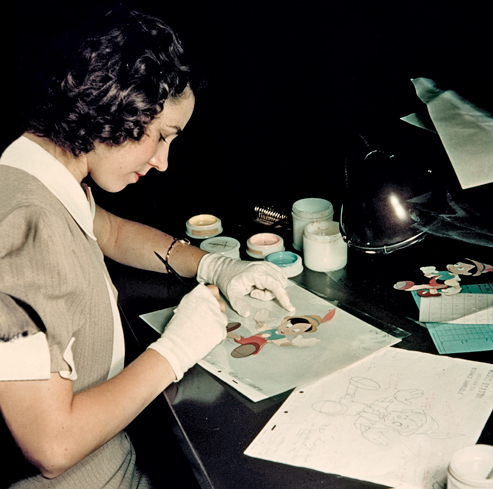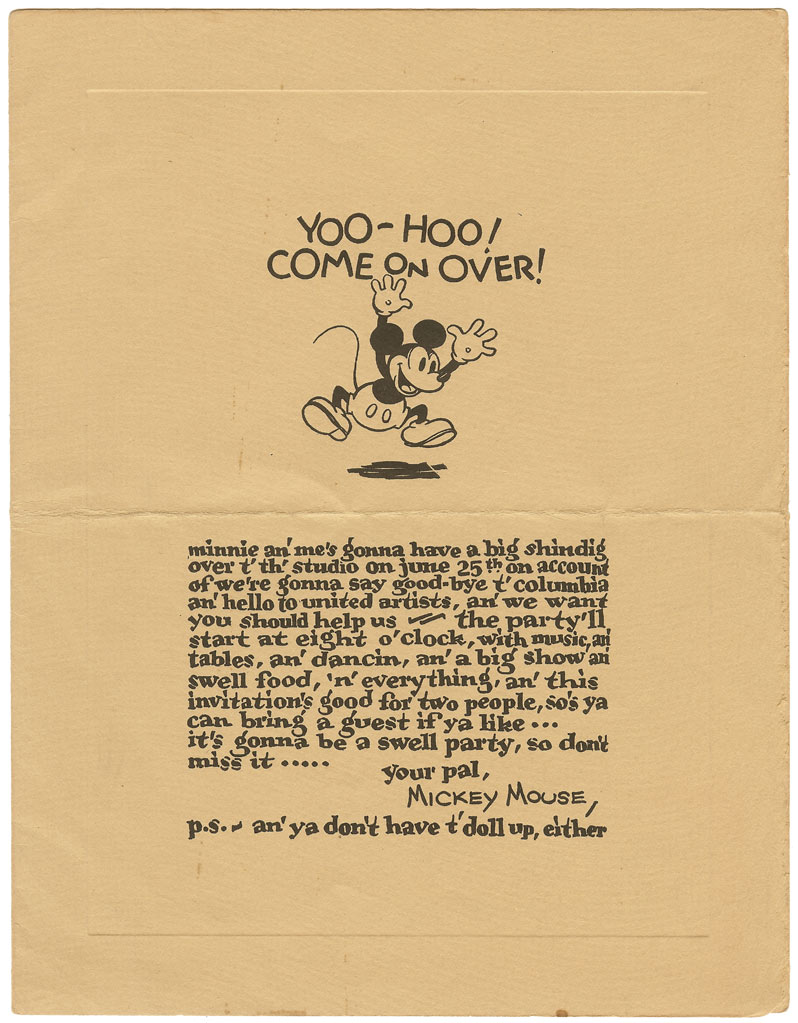Actually, he does. Donald Duck accidentally (and somewhat accurately) described the chemical compound methylene nearly two decades before real-world scientists:
In 1963, the Disney Studio learned just how wide and faithful a readership [Carl] Barks had. A letter arrived from Joseph B. Lambert of the California Institute of Technology, pointing out a curious reference in “The Spin States of Carbenes,” a technical article soon to be published by P.P. Gaspar and G.S. Hammond (in Carbene Chemistry, edited by Wolfgang Kirmse, New York: Academic Press, 1964). “Despite the recent extensive interest in methylene chemistry,” read the article’s last paragraph, “much additional study is required…. Among experiments which have not, to our knowledge, been carried out as yet is one of a most intriguing nature suggested in the literature of no less than 19 years ago (91).” Footnote 91, in turn, directed readers to issue 44 of Walt Disney’s Comics and Stories. … A year later, the Studio received a letter from Richard Greenwald, a scientist at Harvard. “Recent developments in chemistry have focused much attention to species of this sort,” Greenwald commented. “Without getting technical let me say that carbenes can be made but not isolated; i.e. they cannot be put into a jar and kept on a shell. They can, however, be made to react with other substances. Donald was using carbene in just such a manner, many years before ‘real chemists’ thought to do so.”
(Via Cracked’s 5 Amazing Things Invented by Donald Duck [Seriously])

